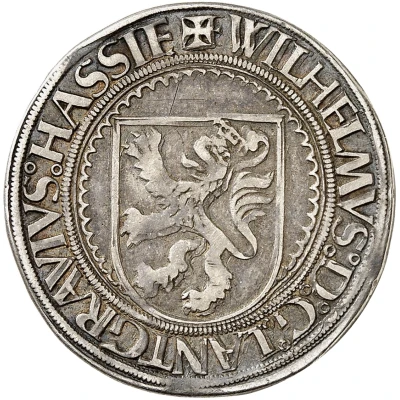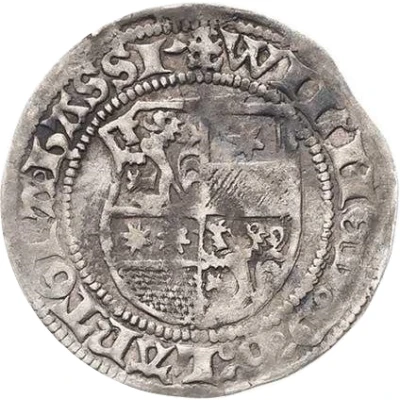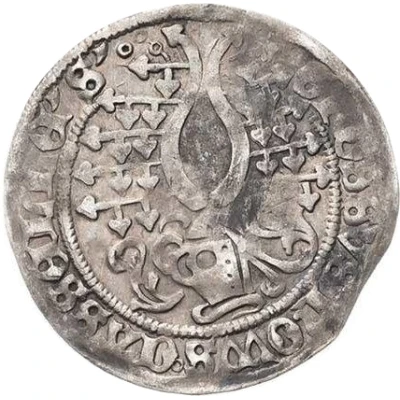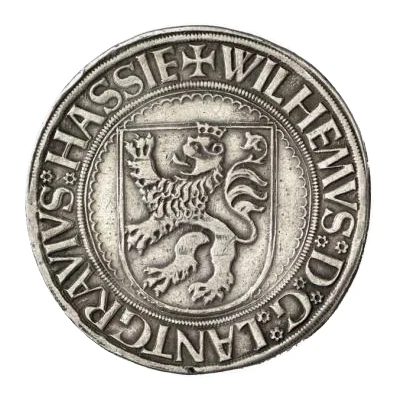


© Fritz Rudolf Künker GmbH & Co. KG, Osnabrück and Lübke & Wiedemann KG, Leonberg
¼ Guldengroschen - William II
| Silver | - | - |
| Issuer | Landgraviate of Hessen (German States) |
|---|---|
| Landgrave | William II (1493-1509) |
| Type | Standard circulation coin |
| Years | 1502-1507 |
| Value | ¼ Guldengroschen |
| Currency | Guldengroschen |
| Composition | Silver |
| Shape | Round |
| Technique | Hammered |
| Demonetized | Yes |
| Updated | 2024-10-05 |
| Numista | N#213619 |
|---|---|
| Rarity index | 97% |
Reverse
Full-length standing figure of St. Elisabeth holding model of church, date in legend.
Script: Latin
Lettering: GLORIA. REI - PVBLICE.
Interesting fact
One interesting fact about the ¼ Guldengroschen coin from the Landgraviate of Hessen is that it was minted during a time of great economic change in Germany. The coin was introduced as part of a new currency system implemented by William II, who was trying to standardize the currency across the German States. This coin, made of silver, was a significant departure from the previous currency system, which was based on the use of bartering and foreign currencies. The introduction of the Guldengroschen coin helped to establish a more stable and uniform economy in the region, and it paved the way for the development of modern currency systems in Germany.



